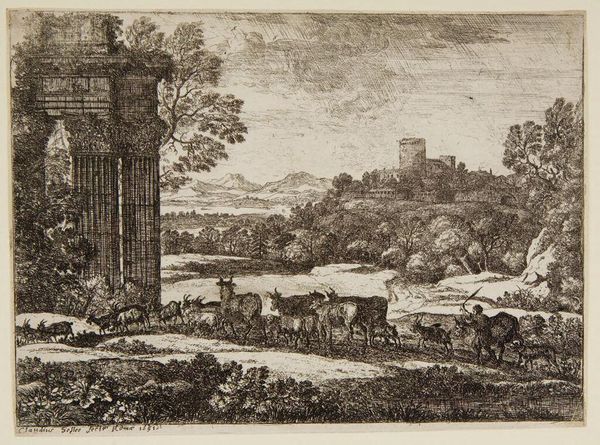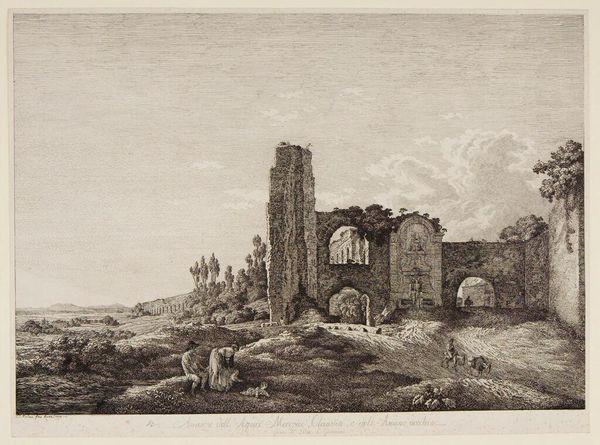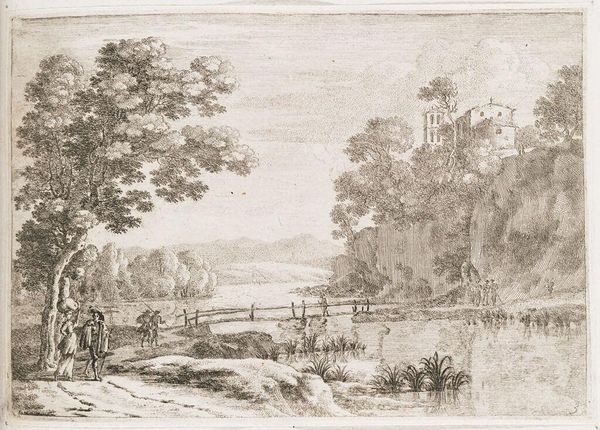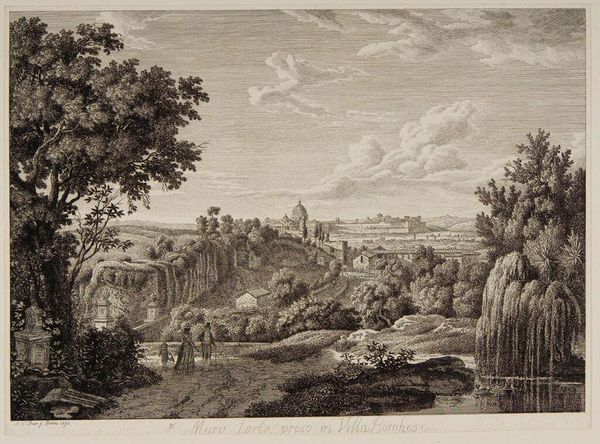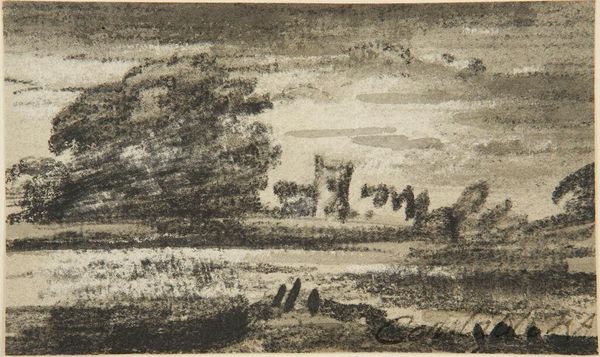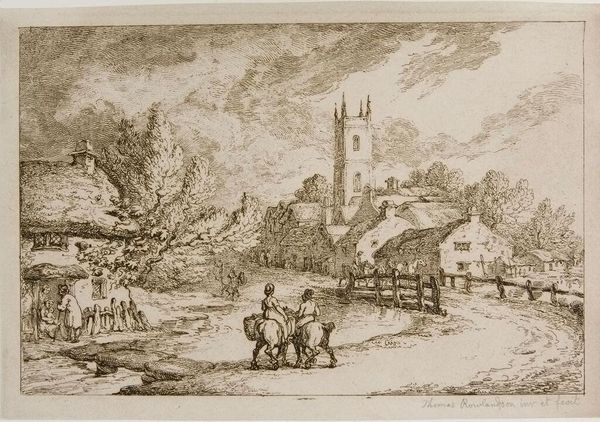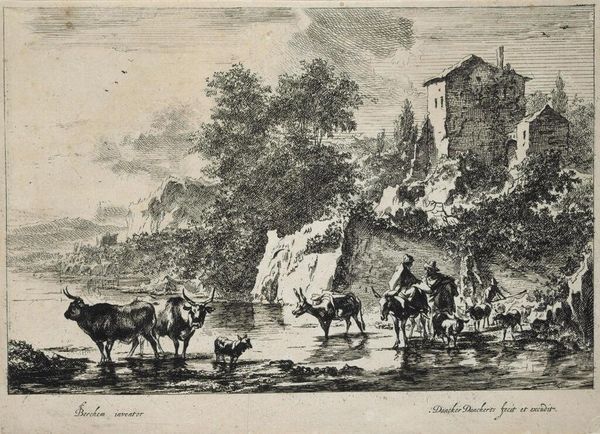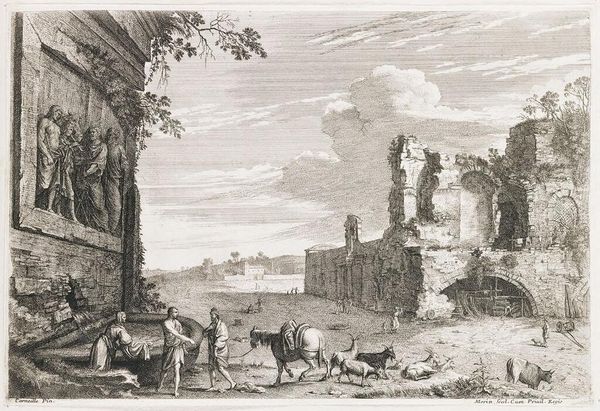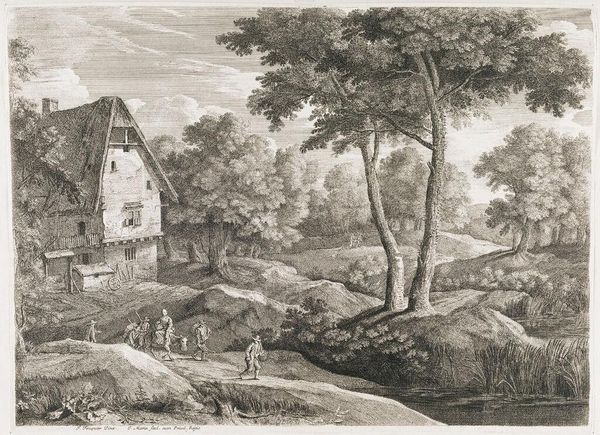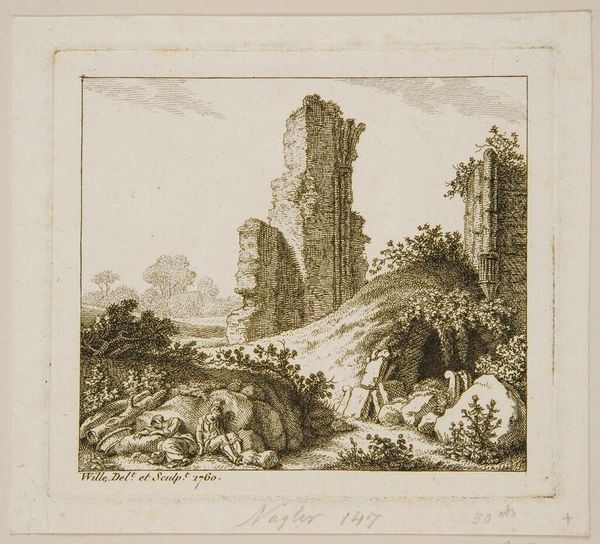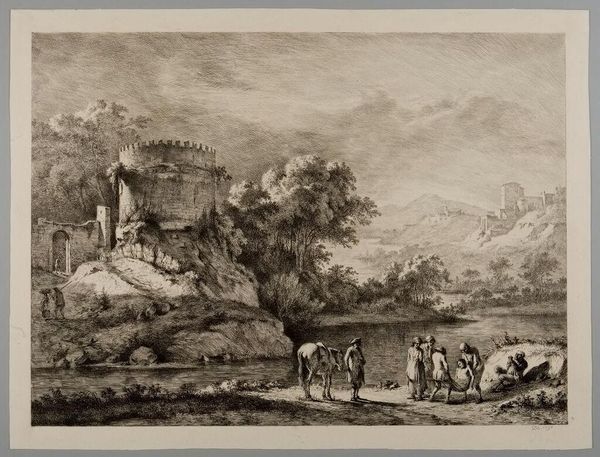
Flock by the Ruins of Brederode c. 18th century
Copyright: CC0 1.0
Curator: This is Cornelis Ploos van Amstel’s “Flock by the Ruins of Brederode,” housed here at the Harvard Art Museums. It's a captivating pastoral scene. Editor: Immediately, I’m struck by the contrast—the serene, almost timeless image of rural life juxtaposed against those crumbling ruins. It creates a curious mood. Curator: The ruins are central. They speak to the transience of power, contrasted by the persistent cycle of agricultural life and the labor involved. Consider the careful etching required to depict the details of the flock. Editor: Yes, the ruin carries so much symbolic weight! It’s a classical memento mori, but also hints at the cyclical nature of history and the enduring power of nature. The animals almost seem oblivious. Curator: Precisely, notice how the artist emphasizes the daily routines—the shepherd, the animals drinking—drawing attention to labor as an active force, shaping and reshaping the landscape itself. Editor: It’s a powerful meditation on time and legacy, how even grand structures eventually return to the earth. A delicate dance of decay and continuity. Curator: Indeed. It’s a striking commentary on the relationship between human endeavors and the persistent forces of nature. Editor: Reflecting on it, the ruins offer a reminder of our own impermanence.
Comments
No comments
Be the first to comment and join the conversation on the ultimate creative platform.
